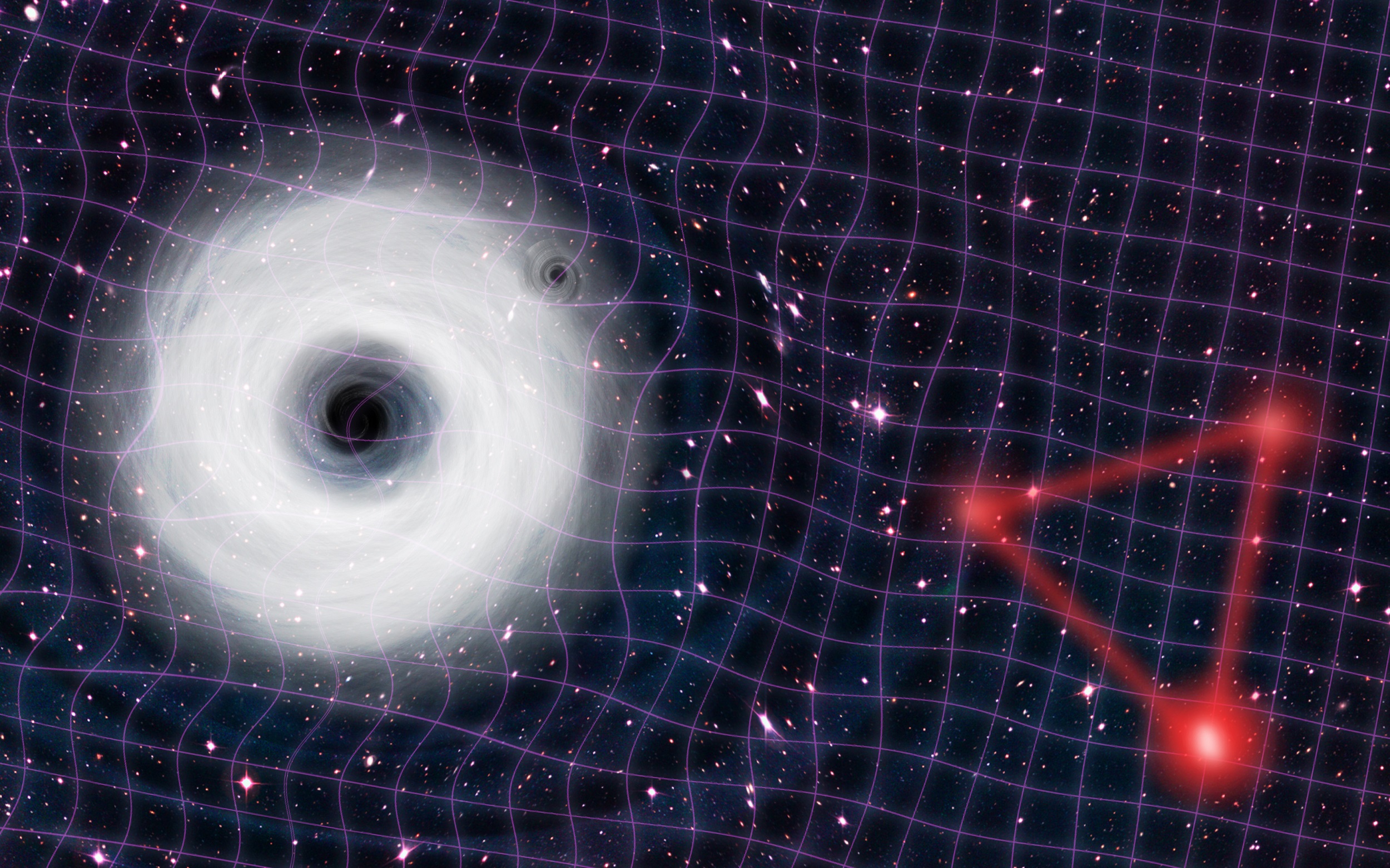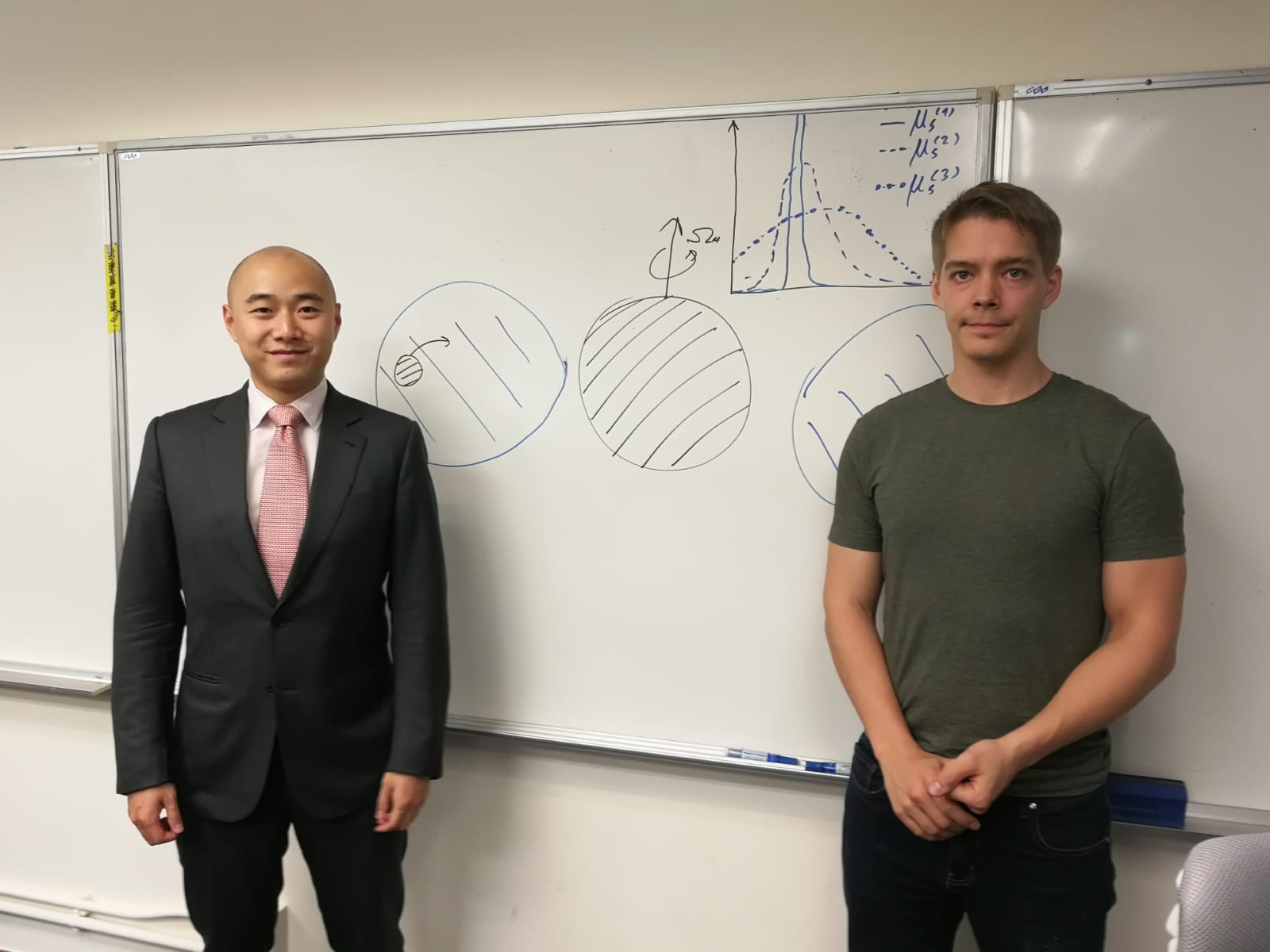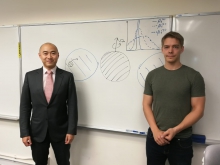News Centre
CUHK Probes the Existence of Ultralight Bosons with a Single Gravitational Wave Measurement
An international team of researchers from the United States and Germany led by Professor Tjonnie Li, Assistant Professor of the Department of Physics, The Chinese University of Hong Kong (CUHK) and Otto Hannuksela, a PhD student of Professor Li, has recently discovered a novel method that might verify the existence of a new hypothetical type of particle, namely ultralight bosons, by using observation of the gravitational waves emitted by a smaller black hole orbiting a larger black hole. The research results have been published in the prestigious scientific journal Nature Astronomy.
Discovering Fundamental Particles Using Gravitational Waves
Dark matter refers to invisible matter that makes up around 85% of all the matter in the Universe. Scientists have strong evidence for the existence of dark matter, yet the current Standard Model of Particle Physics does not offer any explanation for it. Scientists have proposed that dark matter could be composed of ultralight bosons. The ultralight boson may be extremely light, allowing it to exhibit quantum mechanical effects on a large astronomical scale. As such, the particle could couple to black holes to create massive clouds which are intertwined with the black hole properties.
Gravitational waves, ripples in the fabric of space-time, were first detected in 2015 by the Laser Interferometer Gravitational-wave Observatory (LIGO) Scientific Collaboration, opening a new era in scientific research of the Universe. The research led by CUHK shows that gravitational waves could be used to study the aforementioned black hole or cloud systems and hence discover the existence and properties of the ultralight boson. When a smaller black hole orbits a more massive black hole with a cloud, its orbital trajectory is affected by the gravitational pull of the black hole and the friction by the cloud. Gravitational waves from such systems hence encode information on both the cloud and the black hole, which would allow scientists to study the ultralight boson in detail. Professor Tjonnie Li said, “Our research shows that a single gravitational wave measurement can be used to verify the existence of ultralight bosons by model selection, rule out alternative explanations for the signal, and measure the boson’s mass.” Forthcoming gravitational-wave detectors such as Laser Interferometer Space Antenna (LISA) may be able to discover the ultralight boson and write a new chapter in the understanding of fundamental particles of nature.
Research Achievement of Student
Professor Tjonnie Li, who leads the gravitational-wave research group at CUHK as a part of the LIGO Scientific Collaboration, considers it is an essential step for his graduate students to lead research projects towards the end of their studies. As a result, his students deliver outstanding performances and publish papers in prestigious scientific journals and lead the way within the gravitational wave community in their journey to become independent researchers. The project that enabled this exciting discovery was driven by Otto Hannuksela, a PhD student from Finland who is expected to graduate this summer and move to the Netherlands, for a postdoctoral position.
Gravitational-wave Research at CUHK
Professor Tjonnie Li’s group consists of an international community of members. In addition to this new research on astro-particle physics, Professor Li and his group utilise gravitational waves in several exciting studies of gravitational lensing, testing of general relativity, neutron star equation of state, inference of cosmological parameters, and supernovae explosion mechanism. In all these fields, gravitational waves allow for a unique probe to otherwise inaccessible avenues.



